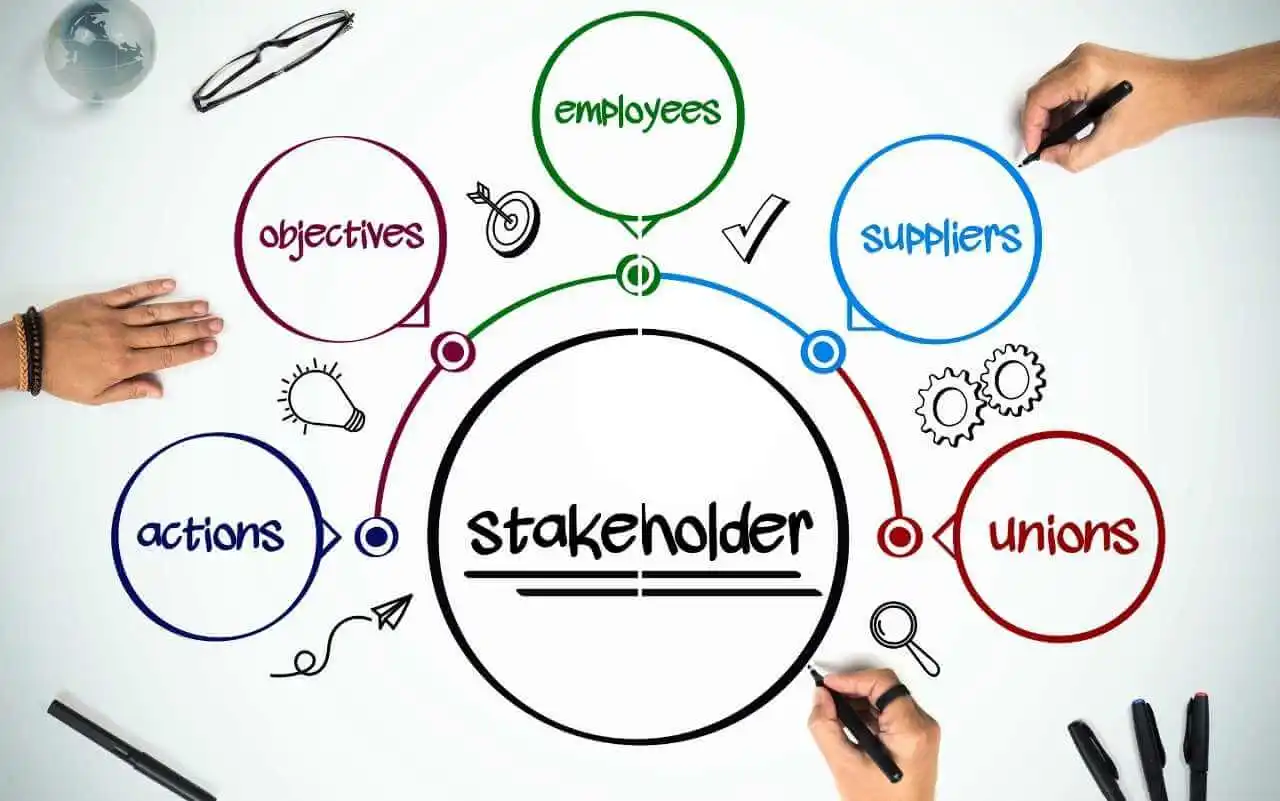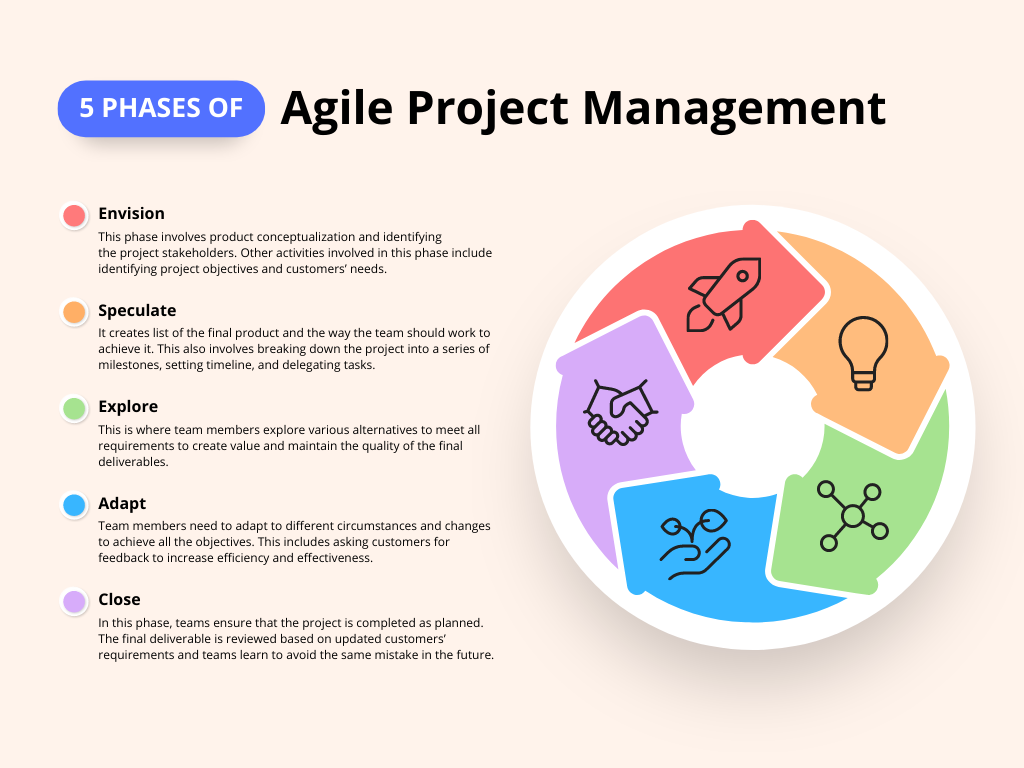
Are you a project manager trying to figure out how to make each project a success? There are a few things that can help. One of them is a project performance matrix.
What are those? And how do they help you track and ensure project success? Which ones are the best ones to use? We’ll answer these in this article.
What Is A Project Management Matrix?
A project management matrix is a tool used in project management to identify and convey project team members’ roles and responsibilities. It establishes a clear structure for delegating duties, delegating decision-making authority, and establishing responsibility within a project.
Each task or activity is listed in rows in a project management matrix, while project team members or roles are specified in columns. Row and column intersections highlight the individual roles involved in each task. One or more roles are awarded a RACI classification for each activity, indicating their level of responsibility, accountability, consultation, or information provision.
5 Types of Project Performance Matrix
1. RACI MATRIX
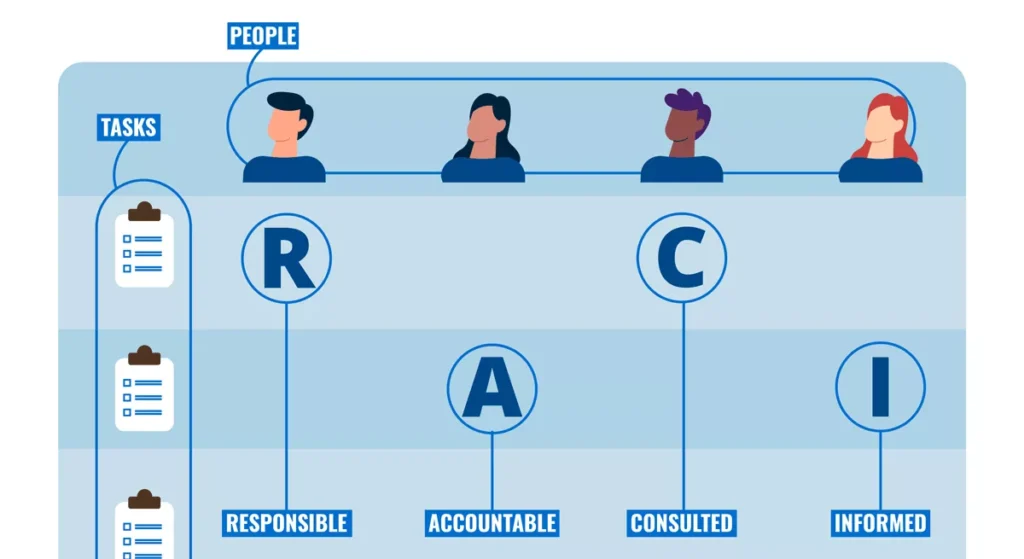
A RACI matrix can help you explain roles and responsibilities within a project or company. RACI is an acronym that stands for Responsible, Accountable, Consulted, and Informed.
Each task or activity in this matrix is allocated one of these roles for the persons or organizations involved. The Responsible position includes those who carry out the work, while the Accountable role includes those who are ultimately accountable for its completion. Included in the Consulted role are those whose feedback is sought, whereas the Informed role includes those who need to be kept up to date.
Organizations can improve communication, streamline decision-making, and increase project efficiency by employing a RACI matrix. It is a vital tool that every project manager should use as it makes tasks easy and straight to the point.
2. The risk assessment matrix

A risk impact matrix is a tool used in risk management to assess and prioritize risks based on their potential impact on a project or organization. It involves plotting risks on a matrix with two dimensions: the likelihood of occurrence and the potential consequences or impact.
Risks are categorized into different levels of severity, such as low, medium, or high, based on their position on the matrix. This enables stakeholders to identify and focus on high-impact risks that require immediate attention, while allocating resources and developing appropriate mitigation strategies for managing and minimizing their potential negative effects. The risk assessment tool should be on your interest list.
3. Stakeholder management matrix
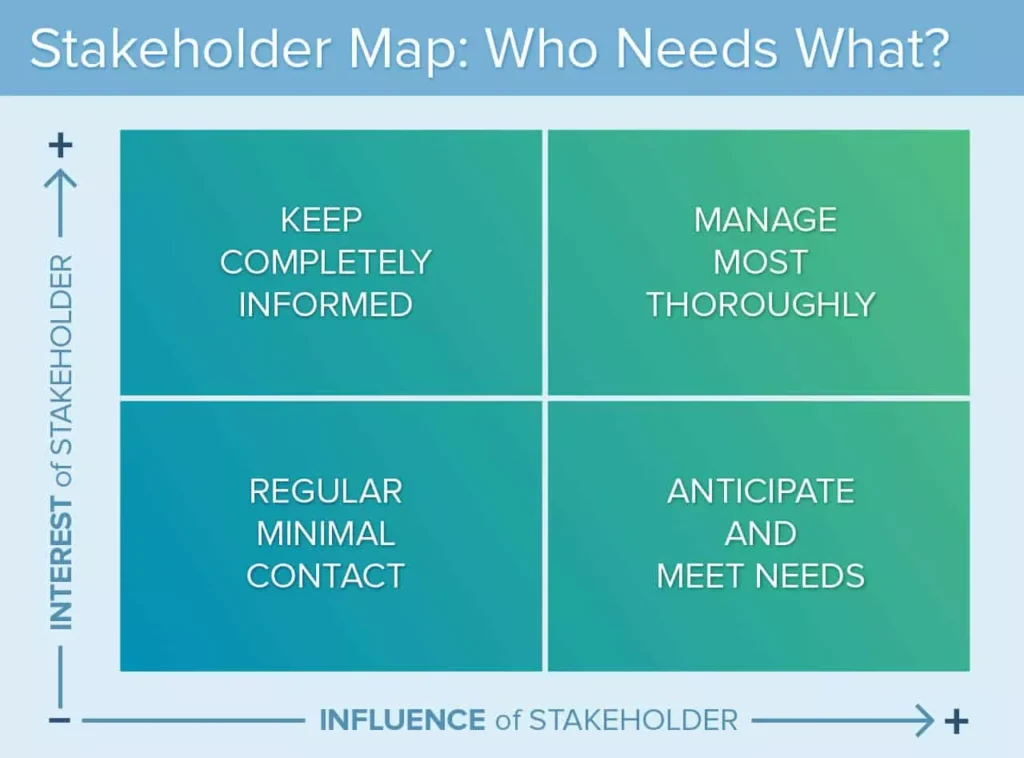
A stakeholder engagement matrix is a technique for identifying and categorizing stakeholders depending on their level of involvement in a project or endeavor. It usually consists of a grid with two axes: one for the stakeholder’s level of interest and the other for their amount of influence.
The matrix aids in the prioritization of stakeholder engagement initiatives by identifying critical stakeholders who require more attention and those who can be kept updated. Organizations can modify their communication and engagement methods as a result, guaranteeing effective stakeholder management throughout the project lifecycle.
4. Communication matrix

The communication matrix is the next project management matrix that every project manager should employ. A communication matrix is a planning and organizing tool for communication operations inside a project or organization.
It assists in identifying key stakeholders, determining their communication needs, and defining appropriate communication routes and frequencies. Typically, the matrix contains information such as the stakeholders engaged, the purpose of communication, the message content, the communication medium, and the responsible parties.
Organizations can use a communication matrix to enhance effective and timely information flow, avoid miscommunication, and promote collaboration among project teams and stakeholders. It acts as a road plan for clear and structured communication, which improves project outcomes and stakeholder satisfaction.
5. Decision making matrix
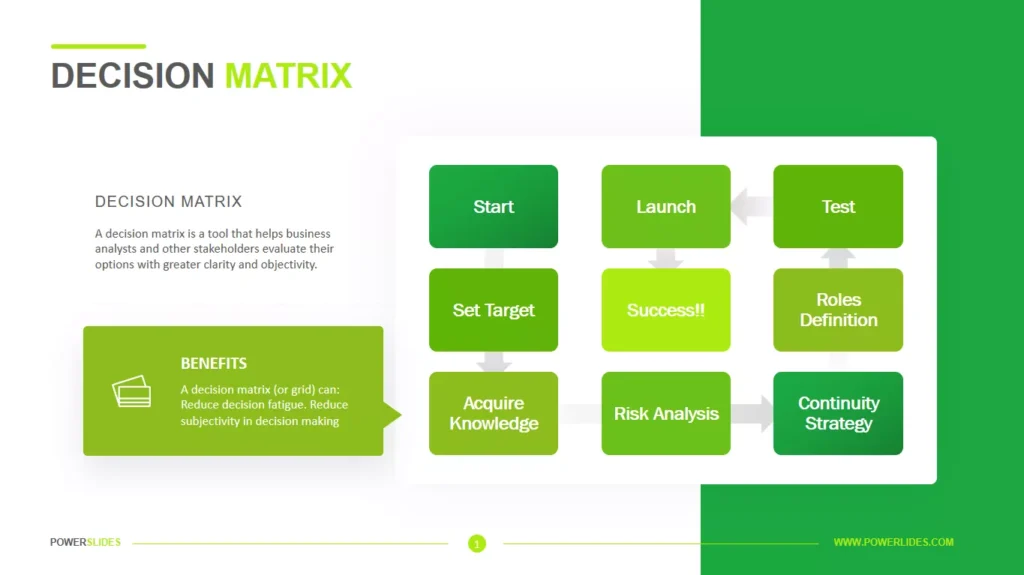
The decision making matrix is the final project management matrix on our list. As the name implies, it aids the project manager in making sound decisions.
A decision-making matrix, also known as a decision matrix or a criterion matrix, is a tool for evaluating and comparing several possibilities or alternatives using a set of criteria. It entails establishing a matrix with options as rows and criteria as columns.
Each criterion has a weight or relevance ascribed to it, and each alternative is evaluated against each criterion. The scores are then multiplied by the weights, and the results are added to establish each option’s overall value or attractiveness.
Bottom Line
We’ve gone over five major project management matrices that every project manager should absolutely use. All of them can aid and assist the project manager in carrying out challenging initiatives. Incorporate these project management performance matrices into your project execution and reap their benefits in the form of successful projects.





